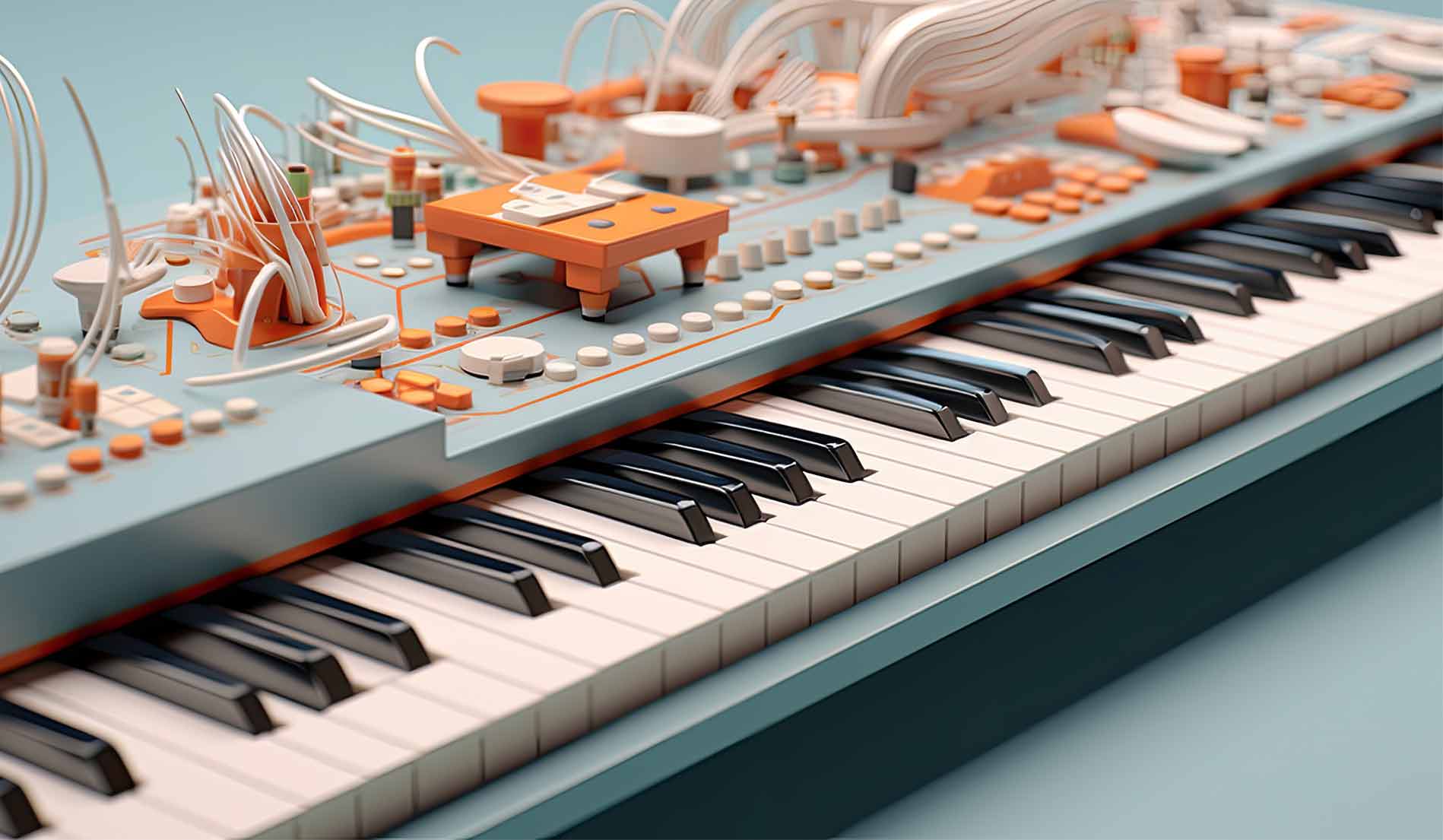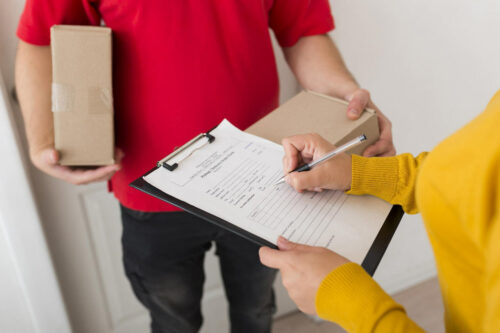Looking to move a piano? Now you’re singing our tune! If you thought learning to play a song on the piano was hard, try moving one; it’s no easy feat.
These beautiful instruments require meticulous care and skill, whether you’re moving them cross-country or to a new house down the block. No matter how long you’ve been playing the piano or how far you’re transporting it, you’ll want experts on the job. Professional piano movers know how to handle the packing, assembling, transportation, and disassembling of a piano move from start to finish.
Still, whether you’re hiring a local piano mover or doing it yourself, there are certain things everyone should know before getting started. We’re here to break them down for you so the whole process can be easy. Now that should be music to your ears!
What to Know Before Moving a Piano
Before you hire movers for your piano, there are a few pieces of information you should know. The type of piano, its size, and the dimensions of where you’re moving it from as well as where you’re moving it to are all vital numbers to have on hand.
Find out how Clutter can help you!
Types of Pianos
Moving an upright piano vs. moving a grand piano is going to be different because of size and weight. Important to note is that there’s a range for how much pianos weigh. For example, upright pianos can weigh between 300 to 900 pounds. A grand piano, on the other hand, can weigh as much as 1,200 pounds, according to PODS.com.
Either way, you can be sure that you’ll be moving something pretty darn heavy. Given that, it’s important to be realistic about your capabilities. Able-bodied though you may be, you may not be able to handle quite this heavy-duty move. Think about that before you try to go it alone. When in doubt, err on the side of caution and hire piano movers. Keep this in mind when moving any heavy items. If you’re not sure if you can do it yourself, it’s a good idea to get a quote from a trusted moving company.
Learn more: Top 12 Essential Apartment Moving Tips for a Smooth Transition
Pro Tip 1 for Moving a Piano: Know the Type
1. Upright – Ranging from 300 to 900 pounds, upright pianos can technically be moved without professional piano movers as long as you have the right equipment. Still, it never hurts to get an estimate for a piano moving cost just to see if your time and effort are worth the hassle.
2. Baby Grand – On average, baby grand pianos weigh between 600 to 700 pounds. Because of their acrylic finishes and the type of wood used to make them, it’s usually best to hire a piano moving service to prevent damages.
3. Grand – With some grand pianos weighing upwards of 1,200 pounds, you’re going to want to hire pro piano movers. This will be the case whether you’re going a long distance or not.
Learn more: 5 Self-Care Tips to Reduce Stress During a Move
Pro Tip 2 for Moving Pianos: Know the Dimensions
Now just because you know whether your piano is an upright or a grand, that doesn’t mean you have all the information you need. Taking the measurements of your piano is equally important. Some upright pianos can weigh just as much as a baby grand. What’s more, their height and width could be deceiving. As such, don’t underestimate the value of having a professional piano mover take the measurements for you.
Learn more: How to Have an Environmentally Friendly Move
Pro Tip 3 for Moving a Piano: Measure the Space
Before planning to move a piano, it’s imperative that you not only measure the space to which you’ll be moving the instrument but also that of your existing area. That includes doorways, hallways, and staircases. Anywhere that will be in your path needs to be measured so you can be sure the piano won’t bump into walls or knock into a bannister.
You may think, “But the piano got in there somehow; it must fit!” While that’s true, it’s also true that the piano movers who got the piano in there in the first place were probably different people from who you’re working with now. Additionally, spatial constraints, methods, and personnel all factor into the equation. It never hurts to know your numbers, but especially when you’re looking to move a piano and are looking for quotes.
TLDR: measure all doorways, hallways, and staircases of both your current space and the new piano room.
Learn more: 17 Best Tips for Moving in Winter: How to Make Your Winter Move Smoother
Pro Tip 4 for Moving Pianos: Map Out Your Path
Not only are you going to want to measure the area but you’re also going to need to map out your path. Knowing what obstacles to look out for (i.e. furniture, corners, etc.) will be a major asset when moving a piano.
Advanced Pro Tip: The best way to save money when moving a piano is to avoid breaking things in the first place. That means plan ahead!
Learn more: 41 Best Moving And Packing Tips That Will Make Your Move Dead Simple
Pro Tip 5 for Moving Pianos: Get the Right Supplies
Protecting your piano during a move is key and to do that, you’ll need the right supplies. These include:
- Moving blankets
- Dolly and/or hand trucks
- Lifting straps
- Tie down straps
- Packing tape
- Bubble wrap
- Work gloves
Pro Tip 6 for Moving Pianos: Protect the Piano
Now that you have the right supplies, the next step is to use them properly. Knowing how to protect your piano during a move is critical. Broken keys, pedals, legs, or strings will not only be upsetting but they’ll also get expensive to replace. Here are a few tips for protecting your piano during a move:
- Use bubble wrap around the pedals
- Secure the piano to a dolly with furniture straps
- Place moving blankets between the piano and the straps
- Secure the lid to the keyboard
Learn more: The Ultimate Moving Checklist – 20+ Best Tips for Moving
Pro Tip 7: Know the Steps Based on the Type of Piano
Once you’re equipped with the knowledge of what type of piano you have, the supplies you need, and the sizing information, the final step is to actually do it.
All professional movers will tell you that there are best practices to adhere to based on the type of piano you’re moving. While there is overlap, the steps vary slightly.
6 Steps for Moving an Upright Piano
Moving an upright piano yourself is doable as long as you know the right steps.
- Wrap the lid over the keyboard and secure it with packing tape.
- Wrap the pedals with bubble wrap and/or plastic stretch wrap. Secure them with packing tape.
- Use moving blankets to wrap all sides of the piano and secure them with tape.
- To move the piano, ensure there is someone on each side to hold it steady and help you lift it.
- Place it on the dolly or hand truck using lifting straps.
- Finally, roll it onto the moving truck and use straps to tie it down once it’s on the truck.
Learn more: How Much Does It Cost to Move? Moving Company Expenses Explained
7 Steps for Moving a Grand Piano
Moving a grand piano could be tricky to do on your own because it needs to be disassembled. It’s best to hire local piano movers for this if you’re not a pro. Still, if you choose to try doing it yourself, follow these steps:
- Lower and secure the top lid.
- Use a screwdriver to disassemble the piano legs and pedals. Then remove all the legs while someone else holds the piano.
- Wrap the lid, keys, and sides with moving blankets and use packing tape to secure them.
- Wrap the legs and pedals separately using moving blankets or bubble wrap and tape.
- Have someone else (preferably more than one person) on each side of the piano to hold it as you start moving it. Use lifting straps to place the piano on the dolly.
- SLOWLY roll it onto the moving truck.
- Use tie down straps to secure the piano against the back wall of the truck so it doesn’t move during transport.
Learn more: 4 Best Moving and Storage Apps to Make Your Move Stress-Free
7 Steps for Moving a Piano on Its Side
- Pad area with moving blankets to prevent damage.
- Move all potential obstacles out of the way.
- Cover the piano with moving blankets. Use packing tape and lifting straps to do so.
- Wrap the legs and pedals of the piano with bubble wrap or packing tape.
- With one person on each side of the piano, lift the instrument on its side.
- Slide it onto the dolly while everyone continues to hold their side of the piano. At the same time, secure the piano to the dolly with the tie down straps.
- Balance the dolly onto the moving ramp as you load the piano onto the piano moving truck. Use safety straps to secure it.
Learn more: How To Find The Best Moving Truck Rental For Your Needs
4 Common piano moving mistakes and how to avoid them
Before we send you on your way, there are a few final words of wisdom we’ll leave you with.
- Don’t try to do it alone. Always make sure you have at least 1-2 extra helpers.
- Get piano moving supplies ahead of time.
- Measure! Measure! Measure! Staircases, doorways, hallways, rooms, and more.
- Consider enlisting the help of a professional piano moving service. A quick search for “moving piano company near me” will yield the results you’re looking for and could save you a major headache.
Learn more: The Ultimate Move-In & Move-Out Cleaning Checklist You Can Actually Use
FAQs for Moving a Piano
Last but not least, the following are common questions you may have related to your piano transport. Keep them in your back pocket as part of your piano moving toolkit. You never know when you might need them!
Q: When should I tune my piano after moving it?
A piano needs to sit for about three weeks after a move before it can be tuned and it’s ready to be played.
Q: Can I move a piano by myself or should I use professional piano movers?
That’s a personal question that only you can answer. This is based on your capabilities, your knowledge about the space, and the supplies you have. When in doubt, it’s usually best to call up local piano movers. After all, why not get a piano moving quote? You may find that it’s worth it!
Q:What should I do if my piano doesn’t fit through the doorways?
Turning the piano on its side may help it fit through a doorway depending on the space.
Q: How does moving a piano affect its tuning?
Moving a piano may affect its tuning by causing its pins to loosen or shift.
Q: Do all pianos need to be tuned after they’re moved?
Not necessarily. Long distance piano movers and other professionals may do such a good job that you won’t need to tune the piano until its due (about once a year).
Q:What are the most common damages that occur during a piano move?
Things to look out for when moving a piano include damage to the piano (scratches, dents, missing/broken keys) and injuries to the people moving it. Additionally, damage to the surrounding walls and furniture fixtures may be common if you’re not an expert piano mover.
At Clutter, while we don’t move pianos ourselves, we can connect you with the right team to do so. Need to move just about anything else? We’re your team!








